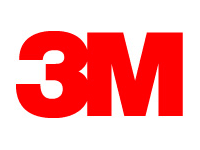#5: Provide access to clean water
All text taken from "Grand Engineering Challenges of the 21st Century", National Academy of Engineering
When Samuel Taylor Coleridge wrote “water, water, everywhere, nor any drop to drink,” he did not have the 21st century’s global water situation in mind. But allowing for poetic license, he wasn’t far from correct. Today, the availability of water for drinking and other uses is a critical problem in many areas of the world.
How serious is our water challenge?
Lack of clean water is responsible for more deaths in the world than war. About 1 out of every 6 people living today do not have adequate access to water, and more than double that number lack basic sanitation, for which water is needed. In some countries, half the population does not have access to safe drinking water, and hence is afflicted with poor health. By some estimates, each day nearly 5,000 children worldwide die from diarrhea-related diseases, a toll that would drop dramatically if sufficient water for sanitation was available.
It’s not that the world does not possess enough water. Globally, water is available in abundance. It is just not always located where it is needed. For example, Canada has plenty of water, far more than its people need, while the Middle East and northern Africa — to name just two of many — suffer from perpetual shortages. Even within specific countries, such as Brazil, some regions are awash in fresh water while other regions, afflicted by drought, go wanting. In many instances, political and economic barriers prevent access to water even in areas where it is otherwise available. And in some developing countries, water supplies are contaminated not only by the people discharging toxic contaminants, but also by arsenic and other naturally occurring poisonous pollutants found in groundwater aquifers.
Water for drinking and personal use is only a small part of society’s total water needs — household water usually accounts for less than 5 percent of total water use. In addition to sanitation, most of the water we use is for agriculture and industry. Of course, water is also needed for ecological processes not directly related to human use. For a healthy, sustainable future for the planet, developing methods of ensuring adequate water supplies pose engineering challenges of the first magnitude.
Of course, by far most of the world’s water is in the oceans, and therefore salty and not usable for most purposes without desalination. About 3 percent of the planet’s water is fresh, but most of that is in the form of snow or ice. Water contained in many groundwater aquifers was mostly deposited in earlier, wetter times, and the rate of use from some aquifers today exceeds the rate of their replenishment.
“Overcoming the crisis in water and sanitation is one of the greatest human development challenges of the early 21st century,” a recent U.N. report warns. [United Nations Development Programme, p. 1]
Where does our water supply come from?
From digging wells to building dams, engineers have historically been prime providers of methods for meeting the water supply and quality needs of society. To meet current needs, which increasingly include environmental and ecosystem preservation and enhancement demands, the methods will have to become more sophisticated.
One large-scale approach used in the U.S., China, India, and other countries has been to divert the flow of water from regions where it is plentiful to where it is scarce. Such diversion projects provide some short-term relief for cities, but do not appear practical as widespread, long-term, ecologically sound solutions, and this method generally will not be able to meet agricultural needs. Furthermore, diverting water to some people often means less for others and can become an explosive political issue.
What is desalination?
Desalination is extracting the salt from seawater. Desalination is not a new idea and is already used in many regions, particularly in the Middle East. Saudi Arabia alone accounts for about a tenth of global desalination. Israel uses desalination technology to provide about a fourth of its domestic water needs. Modern desalination plants employ a method called reverse osmosis, which uses a membrane to separate the salt. More than 12,000 desalination plants now operate in the world.
But desalination plants are expensive to build and require lots of energy to operate, making desalination suitable mainly for seaside cities in rich countries. It therefore has limited value for impoverished countries, where water supply problems are most serious.
New technologies that would lower energy use — and therefore costs — might help desalination’s contribution. One potentially useful new approach, called nano-osmosis, would filter out salt with the use of tiny tubes of carbon. Experiments have shown that such tubes, called nanotubes because their size is on the scale of nanometers, have exceptional filtering abilities.
Even with such advances, though, it seems unlikely that desalination alone will be able to solve the world’s water problems. Other approaches will be needed.
What other technologies will provide clean water?
Technologies are being developed, for instance, to improve recycling of wastewater and sewage treatment so that water can be used for nonpersonal uses such as irrigation or industrial purposes. Recycled water could even resupply aquifers. But very effective purification methods and rigorous safeguards are necessary to preserve the safety of recycled water. (Various nanotechnology approaches may be helpful in this regard, such as nanofiltration membranes that can be designed to remove specific pollutants while allowing important nutrients to pass through. [Hillie et al., pp. 20-21])
A different technological approach to the water problem involves developing strategies for reducing water use. Agricultural irrigation consumes enormous quantities of water; in developing countries, irrigation often exceeds 80 percent of total water use. Improved technologies to more efficiently provide crops with water, such as “drip irrigation,” can substantially reduce agricultural water demand. Already some countries, such as Jordan, have reduced water use substantially with drip technology, but it is not a perfect solution for plant growth (e.g. it does not provide enough water to cleanse the soil). Water loss in urban supply systems is also a significant problem.
Yet another strategy for improving water availability and safety would be small decentralized distillation units, an especially attractive approach in places where infrastructure and distribution problems are severe. One of the main issues is economical distribution of water to rural and low-income areas. Some current projects are striving to produce inexpensive distillation units that can remove contaminants from any water source. A unit smaller than a dishwasher could provide daily clean water for 100 people.
Such approaches will help to address the very real problem of inequitable distribution of water resources. Even within a given country, clean, cheap water may be available to the rich while the poor have to seek out supplies, at higher costs, from intermediary providers or unsafe natural sources. Technological solutions to the world’s water problems must be implemented within systems that recognize and address these inequities.
References
Gleick, P.H., et al. The World’s Water 2006-2007: Biennial Report on Freshwater Resources. Chicago: Island Press.
Hillie, T. et al. 2006. Nanotechnology, Water, and Development. Dillon, CO: Meridian Institute.
United Nations Development Programme. 2006. Human Development Report 2006: Beyond Scarcity: Power, Poverty and the Global Water Crisis. New York: Palgrave Macmillan.
U.S. Census Bureau, Population Division. International Programs Data. Accessed July 2007.
The World Bank, Middle East and North Africa Region. 2007. Making the Most of Scarcity: Accountability for Better Water Management in the Middle East and North Africa: A MENA Development Report. Washington, D.C.: World Bank Publications.
World Health Organization (WHO)/UNICEF Joint Monitoring Programme for Water Supply and Sanitation. 2005. Water for Life: Making It Happen. Paris: WHO Press.
World Water Assessment Programme. 2006. Water: A Shared Responsibility: The United Nations World Water Development Report 2. Paris and New York: United Nations Educational, Scientific and Cultural Organization and Berghahn Books.




